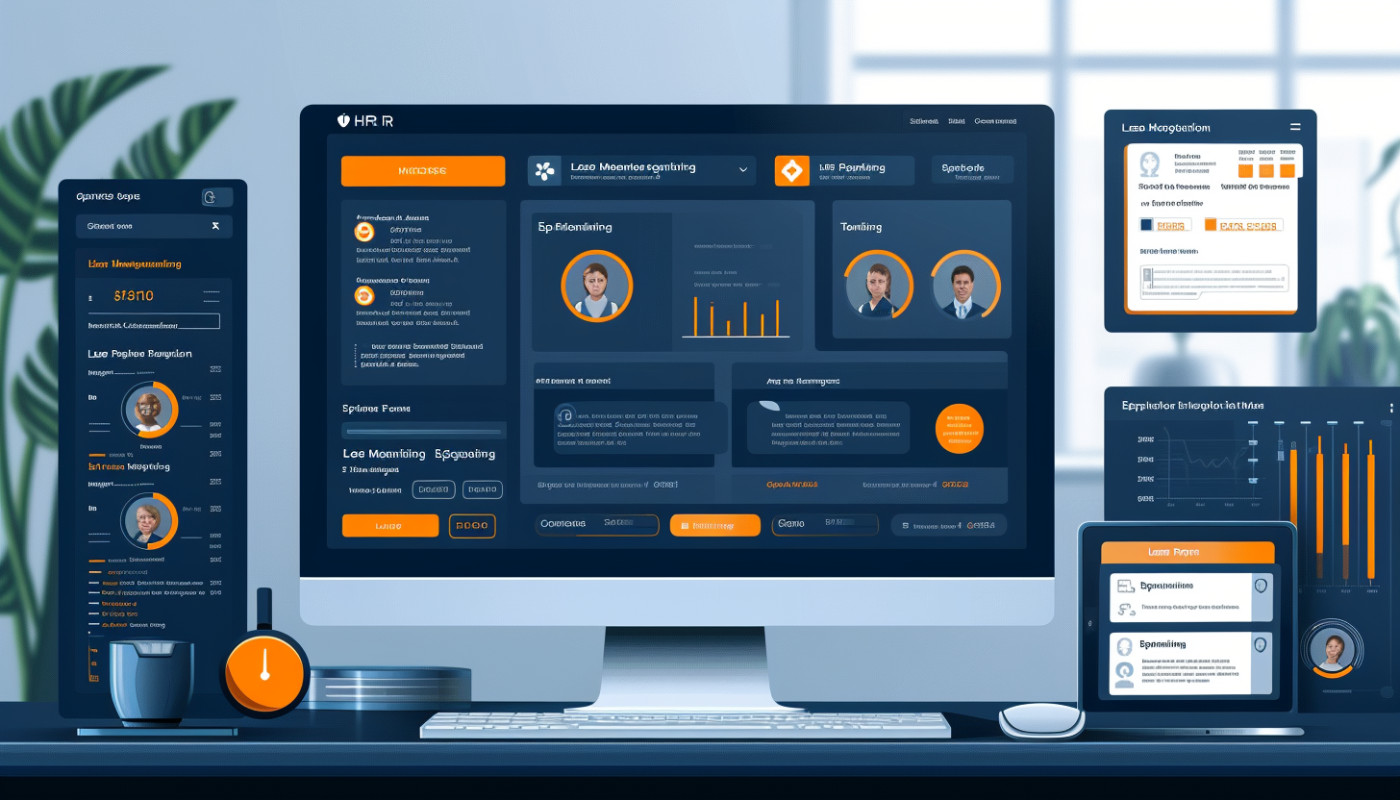Table of contents
In the contemporary business landscape, the drive for efficiency pervades every department, with Human Resources (HR) being no exception. As companies grow and workforces become ever more dispersed, the challenges of managing employee leave and expenses escalate. User-friendly HR software has emerged as a pivotal tool in the simplification and enhancement of these processes. The ability to streamline administrative tasks not only frees up valuable HR time but also improves employee satisfaction by providing clear, straightforward systems for submitting and tracking requests. This article delves into the transformative impact of intuitive software solutions on leave and expense management. It sheds light on how such tools can revolutionize traditional methods, resulting in a more agile and responsive HR function. Let this insightful exploration guide you through the benefits and best practices of adopting user-friendly software to refine HR processes, and discover the significant advantages it holds for your organization.
The Impact of User-Friendly Software on HR Efficiency
The introduction of user-friendly HR software has been transformative in bolstering HR efficiency, particularly in the realms of leave and expense management. By leveraging the power of automation, these advanced tools significantly reduce the manual workloads traditionally placed on human resources teams. The meticulous task of tracking employee leave, processing time-off requests, and managing expense reports can be streamlined, leading to a more agile HR department. Automation not only minimizes the risk of human error but also accelerates the approval workflows, ensuring a quicker turnaround for employees awaiting responses.
A centralized system for managing such data is pivotal to maintaining an organized and efficient HR function. This singular repository allows for real-time data access, providing a comprehensive view of workforce allocations and financial expenditures. The impact of this can be seen in the improved decision-making capabilities and optimized resource management. Streamlined communication is another significant benefit, as these systems often come equipped with integrated messaging features, reducing the need for back-and-forth emails and potential miscommunications.
The role of an HR Director or Chief Human Resources Officer (CHRO) is critical in recognizing and implementing such software solutions. Their authority and strategic vision in choosing platforms that emphasize ease of use, reliability, and comprehensive functionality can drastically enhance HR operations, fostering an environment where leave management and expense management are handled with finesse. Ultimately, the deployment of user-friendly software is instrumental in advancing HR efficiency, leading to a more productive and satisfied workforce.
Enhancing Employee Experience with Intuitive Interfaces
User-friendly software has transformed the way employees interact with leave and expense management systems. An intuitive interface that offers a straightforward user experience is an indispensable aspect of modern HR technology. It significantly improves the employee experience by simplifying time off requests and submitting expenses, which in turn reduces the need for extensive training. This ease of use is not just about practicality; it carries psychological benefits as well. When employees encounter user-centric design, they often feel more empowered and less frustrated, fostering a positive work environment and enhancing overall job satisfaction.
The value of an intuitive interface cannot be overstated. By minimizing the complexity of HR processes, employees can focus on productive tasks rather than administrative complexities. For instance, when a platform like My Intranet is employed, it streamlines the submission process, making it more efficient and less time-consuming. This efficiency is not merely about speed; it's about creating a system where the technology works for the user and not the other way around. As a result, employees feel more in control of their time and contributions, which can lead to increased engagement and retention.
From the perspective of a User Experience (UX) Designer or HR Technology Specialist, the adoption of user-centric design in HR software is a testament to a company's commitment to its workforce. The impact of intuitive interfaces on processes such as time off requests and submitting expenses is profound, offering an experience that respects the user's time and cognitive load. By reducing the friction and frustration often associated with traditional HR systems, a platform that requires minimal training can substantially elevate the standards of employee engagement and operational efficiency within an organization.
Cost-Saving Benefits of Streamlined Leave and Expense Procedures
Implementing user-friendly HR software can result in substantial cost-saving benefits for organizations. By automating leave and expense processes, companies can enjoy reduced labor costs that were once tied to manual processing. The labor-intensive tasks of sorting through paper requests and manually inputting data are eliminated, freeing up staff to focus on more strategic tasks. Additionally, the likelihood of claim errors is significantly diminished when sophisticated algorithms handle expense reporting, mitigating the risk of financial discrepancies and fraud.
Effective workforce planning is another area where user-friendly HR software can have a positive economic impact. With better leave management systems in place, businesses can avoid the common pitfalls of understaffing or overstaffing, ensuring that staffing levels closely match the demands of the business. This leads to higher productivity and cost efficiency. Accurate and effective scheduling is crucial in preventing the unnecessary expense of overtime or the need to hire temporary staff. By leveraging these technological solutions, the individual in charge of financial oversight, such as a Financial Controller or a Chief Financial Officer (CFO), can discern a clear improvement in ROI, as the investment in the software leads to tangible savings and a more streamlined operation.
Ensuring Compliance with Automated Tracking and Reporting
For organizations navigating the complex landscape of employment regulations, leveraging user-friendly software for leave and expense management is a vital strategy in ensuring compliance. Automated tracking systems are designed to meticulously monitor employee leave and financial expenditures, aligning with legal requirements and mitigating the risk of non-compliance. A seamless integration of these technologies into HR processes can significantly simplify compliance efforts, allowing companies to maintain accurate record-keeping without the burden of manual oversight.
The implementation of such systems can serve as a safeguard against legal complications, providing a clear audit trail in the event of an inquiry or inspection. This digital trail of documentation ensures that all transactions and leave records are traceable, transparent, and easily accessible, which is indispensable in upholding the integrity of an organization's compliance structure. From an auditor's perspective, the presence of an automated tracking system instills confidence in the accuracy and reliability of a company's internal records.
Fostering accurate record-keeping practices is not merely an administrative concern but a strategic facet of risk reduction. Errors in data management can lead to costly violations and damage to an organization's reputation. By integrating user-friendly software that automates and streamlines the reporting of leave and expenses, businesses can establish a robust defense against potential compliance infractions, ensuring their operations remain within the bounds of employment laws and regulations.
Future-Proofing HR Operations with Scalable Software Solutions
In the landscape of modern businesses, the ability to anticipate and adapt to organizational shifts is vital. Future-proofing HR functions has become a paramount concern, particularly with the realm of leave and expense management. Scalable software solutions offer a resilient platform capable of weathering the demands of a growing organization. The adoption of such systems ensures that as a company expands—whether in workforce size, operational complexity, or geographical spread—the HR software can handle an increasing number of users and more intricate organizational structures without sacrificing performance or user experience.
The selection of scalable software should not be taken lightly, as the right choice can dramatically streamline HR processes well into the future. A software's modularity—the capacity to expand or contract its features and functionalities—is indispensable for businesses undergoing transformation. This adaptability enables the seamless integration of evolving business processes over time. For HR professionals and systems architects, particularly a Chief Information Officer (CIO) or an HR Systems Manager, prioritizing modularity and scalability in their software procurement can lead to significant long-term benefits, ensuring that HR systems remain robust and responsive in the face of change.
Similar articles





